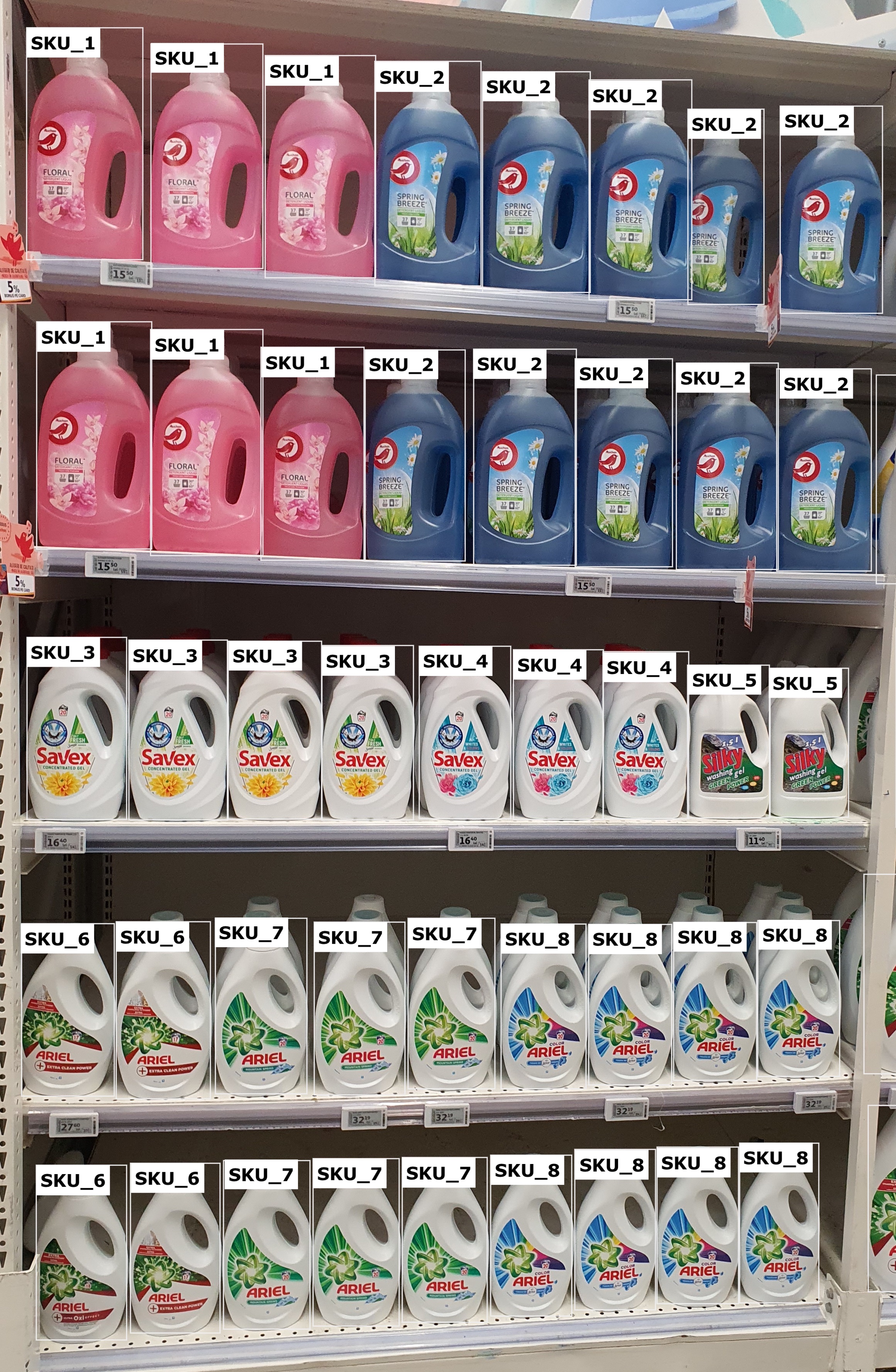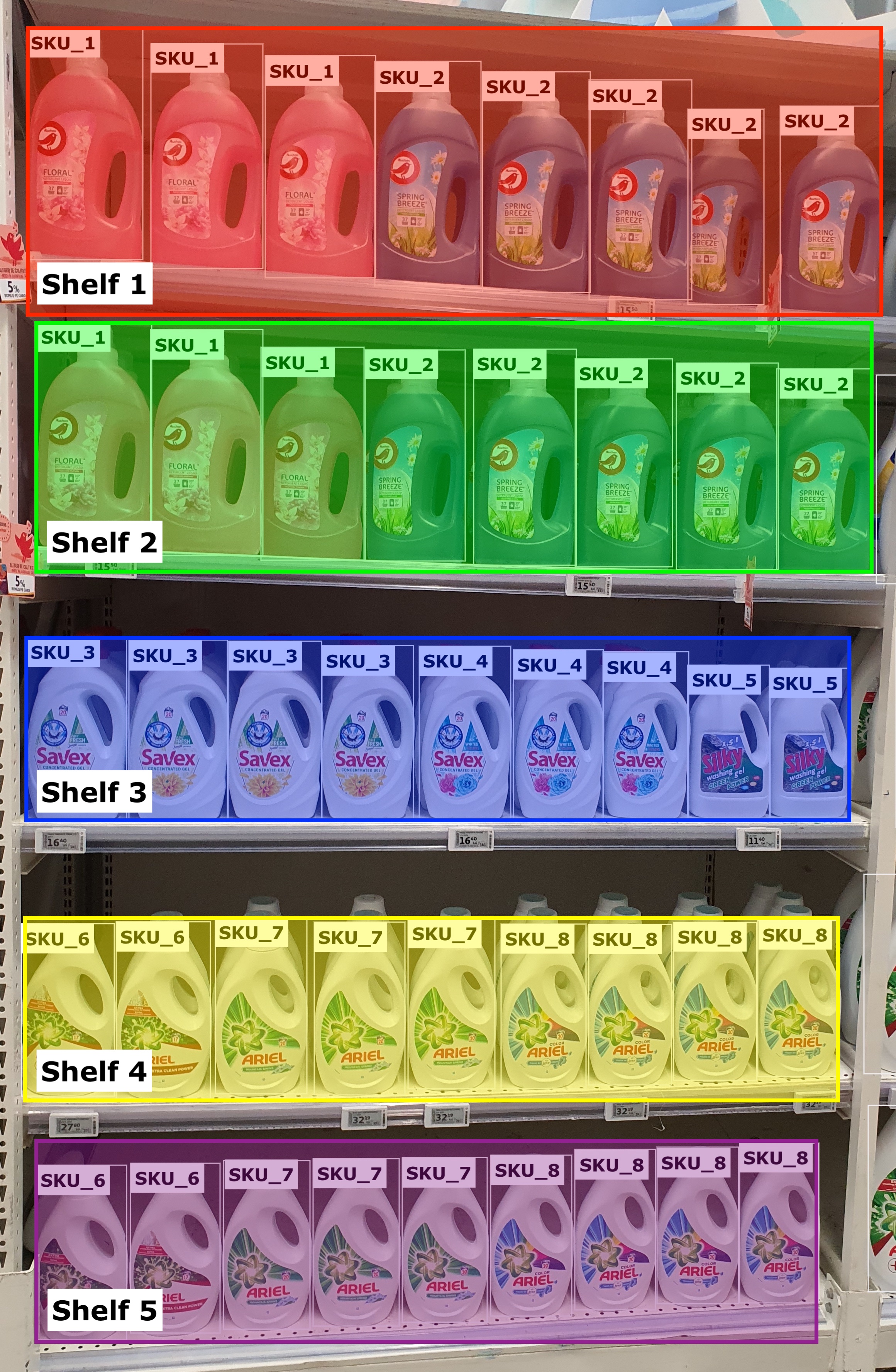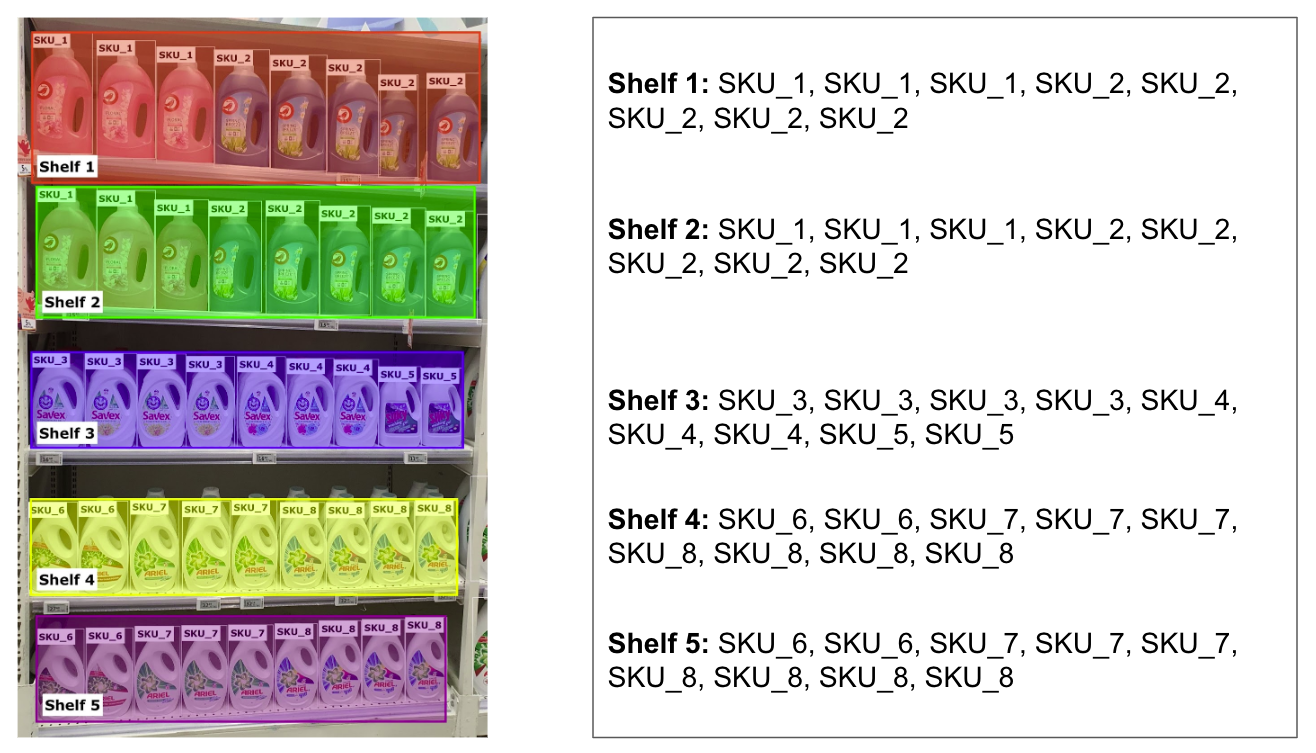🧩 Planogram compliance
A planogram is a visual representation of how products should be placed on a retail shelf. This feature is designed to provide valuable insights and analytics on in-store compliance, helping users to optimize their product placement and ensure compliance.
How it works
The Planogram Compliance feature works hand in hand with the Product Recognition feature to build a Realogram, which helps users compare the placement of products with the manufacturer's planogram.
Once an image is uploaded, the system will automatically detect the products, identify the shelves they are located on, and align the products with the shelves, to build the Realogram. The system is robust to angled photos and variable shelf conditions.
3 Steps to create a Realogram
Step 1: Detect the products
The first step is to detect all the products in the image of the retail shelf. The system will use advanced image processing and machine learning algorithms to identify and locate all the products in the image.

Step 2: Identify the shelves
Once the products have been detected, the next step is to identify the shelves they are located on. This can be done by grouping the products based on their coordinates and assigning them to the corresponding shelf.

Step 3: Create the Realogram
With the shelves and products identified, the Realogram is automatically created by placing the products on the corresponding shelves in the visual representation. The Realogram accurately reflects the placement of products on the shelves as they appear in the image.

Use cases
Planogram Compliance has a wide range of use cases, including:
- Ensuring compliance with manufacturer's planogram
- Identifying and correcting product placement errors
- Identifying out-of-stock products
Getting started
To start using the Planogram Compliance feature, simply upload an image of a retail shelf to a Detection Job with the Planogram Compliance feature enabled. The system will automatically detect and extract pricing information and return in as part of the response JSON.
By automating the process of comparing individual product placement with the planogram, it saves time and resources, while providing valuable insights and analytics on in-store compliance and creating a slick visualisation of the reality on the shelf.